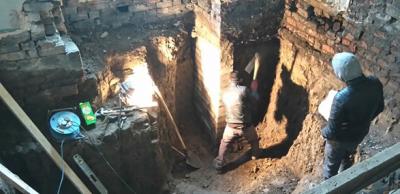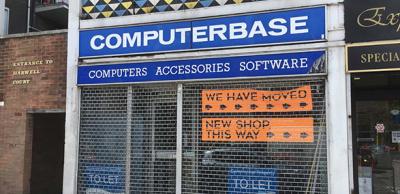How to get it right: Building control exemptions (or when you DON'T need building regulations approval)
While we love to be involved, there are times when you won’t need a Building Regulations application. Whether you are carrying out building work yourself, or employing a builder, there are a number of building regulations exemptions to both work and buildings that don't need building control approval.
The following is intended as a guide but you should always check with your local LABC team if you're in any doubt or need clarification. You can also view Planning Portal’s interactive guides for more information.
Remember, these exemptions only relate to building control applications and you may need to apply for planning permission separately, particularly if you live in, or are carrying out work, to a property that is listed or within a conservation area.
Work that does not need building control approval
- Maintenance work
- Minor repairs
- Replacing less than 25 per cent of an item, like-for-like
- Additional power or lighting points and switches (except around baths and showers)
- Alterations to existing circuits (except around baths and showers)
- Like-for-like replacements of baths, toilets, basins or sinks
- Boundary or garden walls, fences and gates
- In some cases, works that are being carried out by competent registered persons (check details for this with your local LABC team)
Buildings that do not need building control approval
- Greenhouses (providing they are not used for retail, packing or exhibiting)
- Some agricultural buildings (check with your local LABC team)
- Temporary buildings (erected for less than 28 days)
- Some ancillary buildings such as estate sales buildings and building site offices without sleeping accommodation
- Some small detached buildings (check with your local LABC team)
- Buildings that are not frequented by people (check with your local LABC team)
- Detached single storey buildings, including garages, that are less than 30m2 floor area and contain no sleeping accommodation, and are at least one metre from any boundary or constructed of non-combustible materials
- Detached single storey buildings that are less than 15m2 floor area
- An extension to a building at ground level consisting of a porch of less than 30m2 floor area and separated from the house by an external type door
- A carport open on at least two sides
- A covered yard or covered way less than 30m2
- A conservatory or porch that is less than 30m2, with a significant proportion of the roof and walls glazed (no % given), it must be at ground level, it must comply with relevant sections of Part K (glazing), be thermally separated from the dwelling by external quality windows and/or doors and the buildings heating system must not be extended into the conservatory or porch.
- Crown property
- Buildings subject to the Explosives Act
- Buildings other than houses or offices erected on a site licensed under the Nuclear Installations Act
- Buildings included in the Schedule to Section 1 of the Ancients Monuments and Archaeological Areas Act
Don’t forget that you might still need approval for any enabling works. For example creating a wider opening into an exempt conservatory would still need approval for the structural alteration to widen the opening.
Further information
For further guidance on getting building control approval visit the Planning Portal’s free guide.
Please Note: Every care was taken to ensure the information was correct at the time of publication. Any written guidance provided does not replace the user’s professional judgement. It is the responsibility of the dutyholder or person carrying out the work to ensure compliance with relevant building regulations or applicable technical standards.
Sign up to the building bulletin newsletter
Over 48,000 construction professionals have already signed up for the LABC Building Bulletin.
Join them and receive useful tips, practical technical information and industry news by email once every 6 weeks.
Subscribe to the Building Bulletin





Comments
LABC response
Submitted 2 years 12 months ago
Kind regards,
LABC Team
Conservatory Roof Change
Submitted 3 years ago
LABC response
Submitted 3 years ago
Thank you for your recent enquiry regarding replacing a conservatory roof and building regulations.
LABC is a membership organisation, providing advice and support to its member local authorities around England and Wales. As a result, LABC cannot comment on the application and enforcement of the Building Regulations on individual cases, as this is a matter for the local council – being the enforcing authority for building regulations.
Consequently, we recommend that you discuss this matter with your local council building control service, who are the enforcing authority for building regulations in your local area and who will be able to discuss your proposals with you in more detail and how the requirements of the building regulations might be applied to your specific project.
Best,
LABC team
RE - Non load bearing wall
Submitted 3 years ago
Do I need approval for the removal of a non-load bearing stud wall in our flat?
Rgds
Sean
LABC Response
Submitted 3 years ago
Thank you for your enquiry, a non-loadbearing will not need an application or approval from a structural point of view, however if the removal of the wall alters the fire safety requirements of the building regulations then you will need to make an application to the LABC team where you live.
Kind Regards,
LABC Team
Building Regulations and original title deed covenants
Submitted 2 years 10 months ago
1/ I have one of a set of 10 semi-detached houses designed in 1925 and built in 1929. There are 2 houses which are bigger than the other 8 central to a horseshoe of 10 and they have the 'master deed covenant' within their title deeds which states how the development was to be carried out and any stipulations. That master covenant as I call it is referred to in my title deeds but not in its' entirety but within the master one it states that there are limitations on encroaching on gardens for example yet other owners of said houses have had planning involved in extensions which do not adhere to this main covenant.
In terms of building control how do your local offices advise on such matters or do they consider them at all? Or are such covenants in title deeds considered defunct now as properties need to meet modern day living standards? Can you post any useful link/info on such matters at all?
2/ Water supply: a strange anomally whereby the water supply to my property which is lead and should be replaced travels over 2 other gardens before it reaches my boundary and those properties have each extended seemingly within permitted development and have potentially compromised or got close to this water pipe. Needless to say I was never alerted or consulted! It may need re-routing entirely as it is a landlocked situation as I understand it and I believe I would be responsible for any leaks from my pipe (it is not shared, each property has its own pipe). To do so will be a big task as the water mains is not nearby and it would involve either moleing or trenching a sloped drive and under a full depth of house garage with concrete floor. Not an easy task.
What, if any input does building regs have on water supply pipes from the boundary and into a domestic property? Also how do you consider such matters, if at all, when passing permitted developments for approval? Thank you
LABC response
Submitted 2 years 10 months ago
1 -
Thank you for your recent online question regarding the matter of covenants. LABC has more advice on this subject at LABC Front Door (www.labcfrontdoor.co.uk). Building Control and building regulations do not enforce covenants, which is a private legal matter for property owners. As such we recommend that you seek independent advice from a legal professional – preferably one with experience in property law.
2 -
The Building Regulations requires that new properties are supplied with wholesome water – generally water which is supplied by the water company for the local region. It can be supplied by a licensed water supplier, but the requirement is only for the water to be wholesome, there is no requirement or control in the building regulations or the Building Act 1984 as to the routing of the pipework that supplies wholesome water from the mains into a property, this tends to be a matter for the water company to determine.
Permitted Development is a matter for the Local Planning Authority and not Building Control. Generally, Building Control will look to ascertain if any underground services are protected from any new building work and vice versa, by checking if foundations etc are designed so as not to damage any pipes, cables or drains. However, it is a matter for the person carrying the building work to check with any of the utility companies if they require pipes or cables to be re-routed/diverted, or protected to a higher standard than building regulations would normally require.
Best,
LABC
Bricking up window
Submitted 2 years 10 months ago
Would they have required Building Regulations approval to carry out these works? If so, which ones?
LABC response
Submitted 2 years 10 months ago
The answer to your enquiry will depend upon the specific circumstances encountered. Consequently, we recommend that your neighbour should discuss this matter with the local council building control service. They are the enforcing authority for building regulations in your local area and they will be able to discuss the works with your neighbour in more detail and how the requirements of the building regulations might be applied to this specific project. It is advisable for a bathroom to be provided with a means of extracting ventilation irrespective of whether building regulations apply or not.
Best,
LABC
Lean to roof
Submitted 2 years 8 months ago
Add new comment